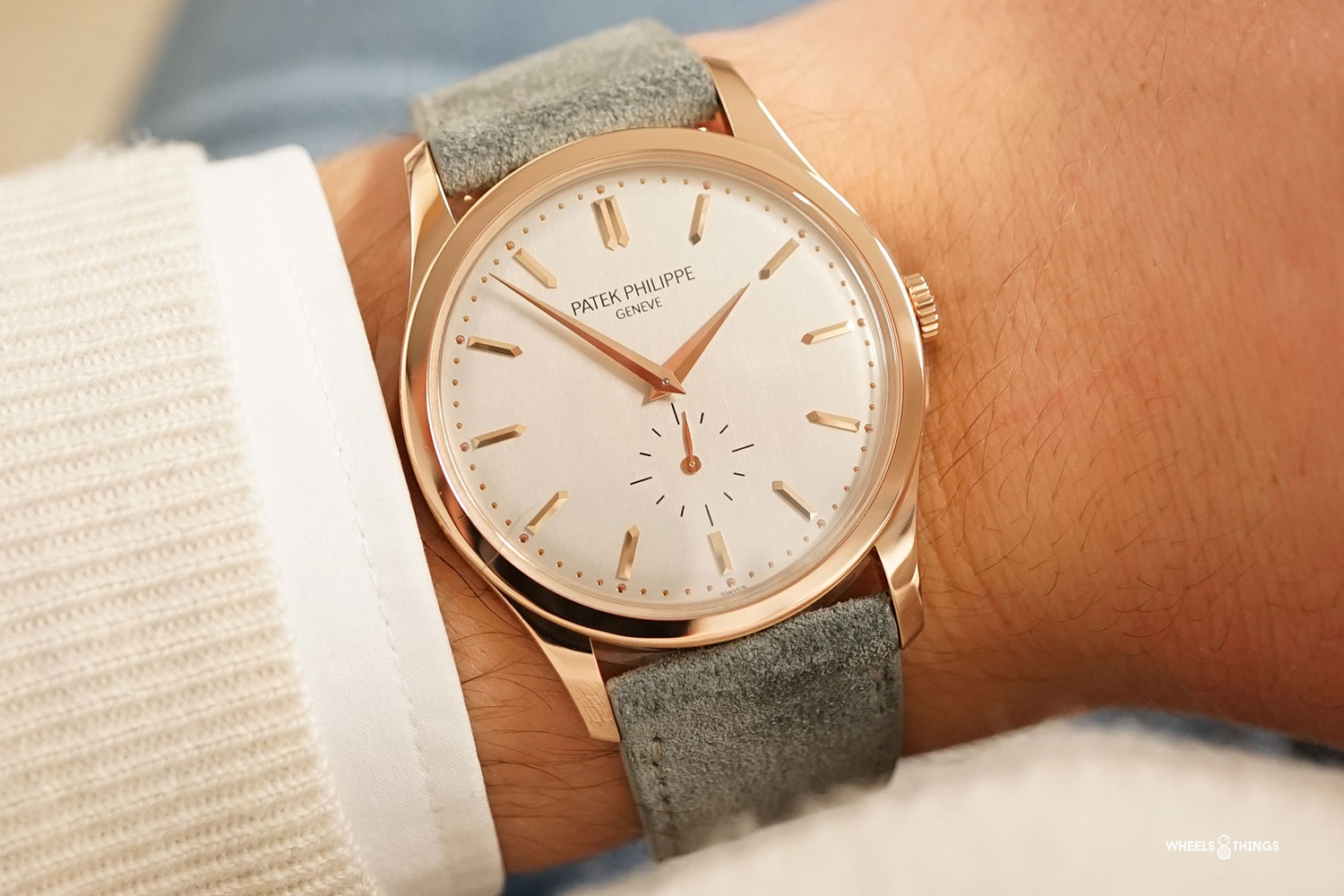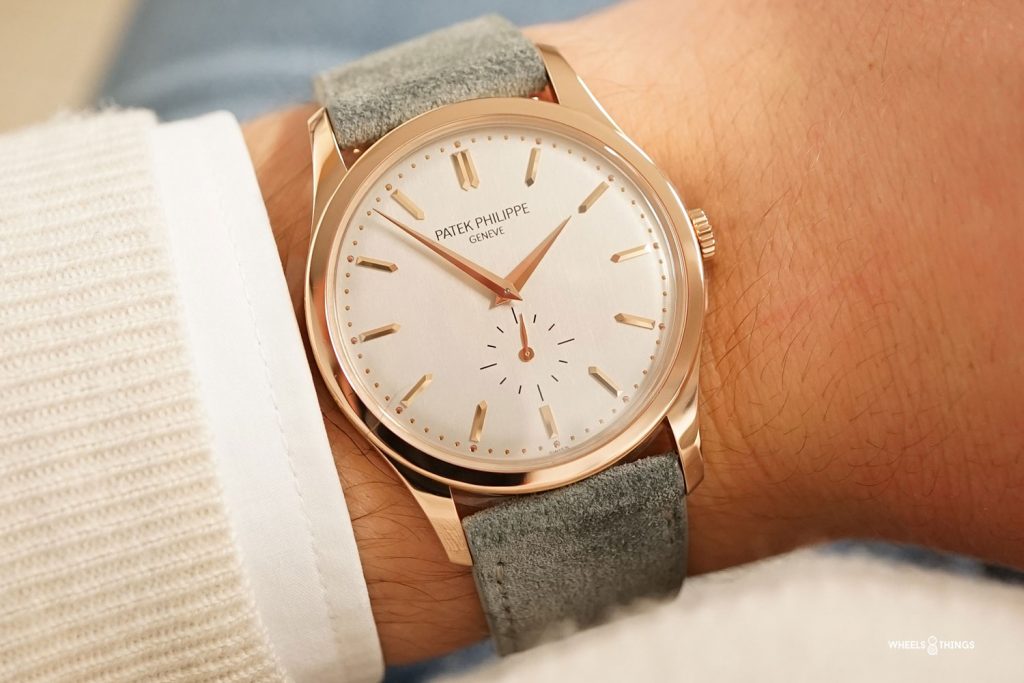
Let me tell you about that time I first traveled to the South of France. Together with the family in the car enjoying the drive towards vacation sun and sea.
Vacation Feeling
On arrival, we unload. Soon, we feel the sun on our skin and want to get into that beautiful sea as soon as possible, whoow.
After the refreshment, quickly eat some melon et jambon. In the afternoon, relax on the beach, the sand between your toes and the feeling of a slightly burnt skin.
That unique feeling of purity comes back every time I look at this piece, a Patek Philippe Calatrava. A watch that appeals to the imagination, a piece that cannot be missing from any collection.
A watch that is recognised by every watch connoisseur. Because who wants a block of steel with an interior that tries to show the time somewhere between the hectic face?
No one, because after all, simplicity is a virtue and take it from me that acting normal is crazy enough.
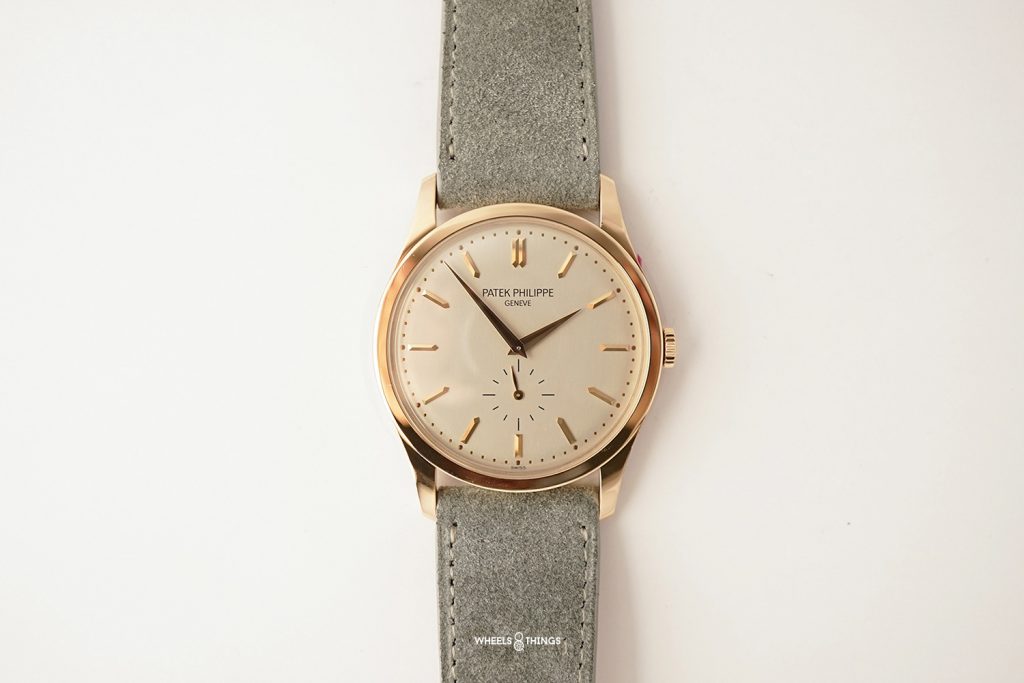
In the early 1930s, a wristwatch was a relatively new phenomenon. However, it was a phenomenon that quickly gained popularity with its use in the First World War. After a short time, the wristwatch was used as a reliable measuring instrument. A useful tool even for those who were far away from the battlefield.
Precision
Before the wristwatch became popular, people used a pocket watch. This was at a time when the measuring instrument was associated with precision. This was due to the most important part of public transport being the train.
Technological developments in the automobile and aviation sectors gradually relegated the pocket watch to the background. Patek Philippe was quick to respond. Precision and reliability were the new keywords of the moment.
Patek Philippe launched the Calatrava in 1932, a watch that seamlessly combines precision and prestige to this day.
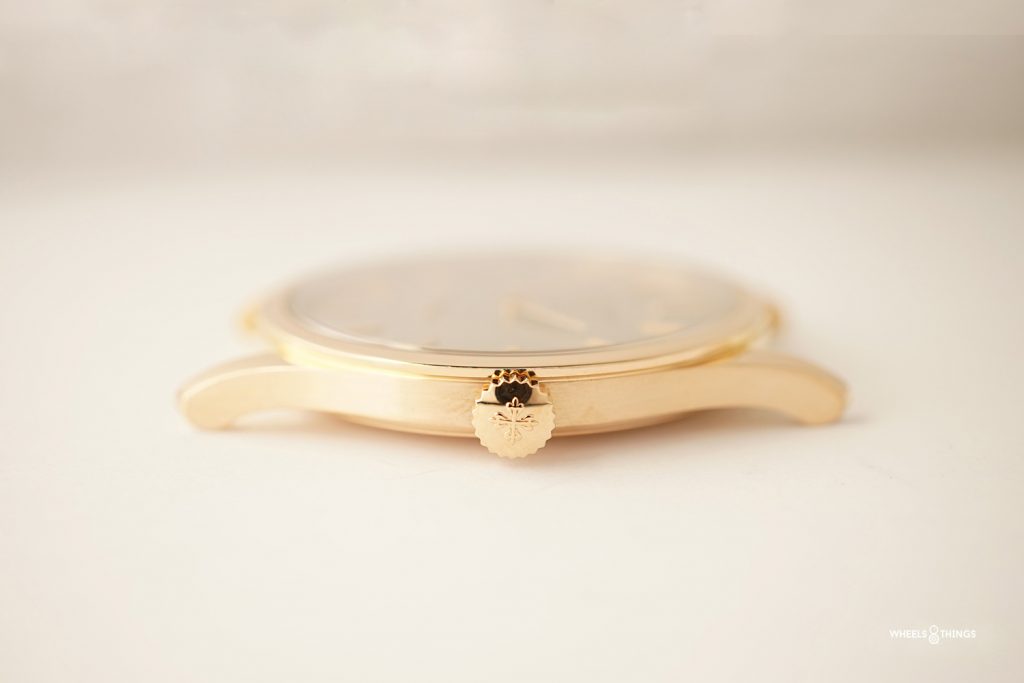
The Calatrava takes its name from the graceful Calatrava cross, the cross-shaped symbol that was first used on the marching banners of the Calatrava knights who defended the Calatrava fortress against the Moors in 1158. The same symbol was registered as a trademark on 27 April 1887, alongside Patek Philippe & Cie.
Technical
PATEK PHILIPPE CALATRAVA REF. 5196
The model we had visiting our atelier was the Patek Philippe REF.5196, note the use of ’96’, this is a big wink to the first reference made of the Calatrava.
The slightly larger case shape of 37mm, is still a treat for the eyes and remains the perfect example of elegance.
The flat bezel finish with edges reminiscent of a gold coin. The dial finished with rose gold indexes. Rose gold hands and a dial that seems so simple but is oh so difficult to understand and match. With this timepiece, watching the time is a treat for the eyes.
215 PS
No, we are not talking about horsepower here, but about the interior of the 5196 Patek Philippe.
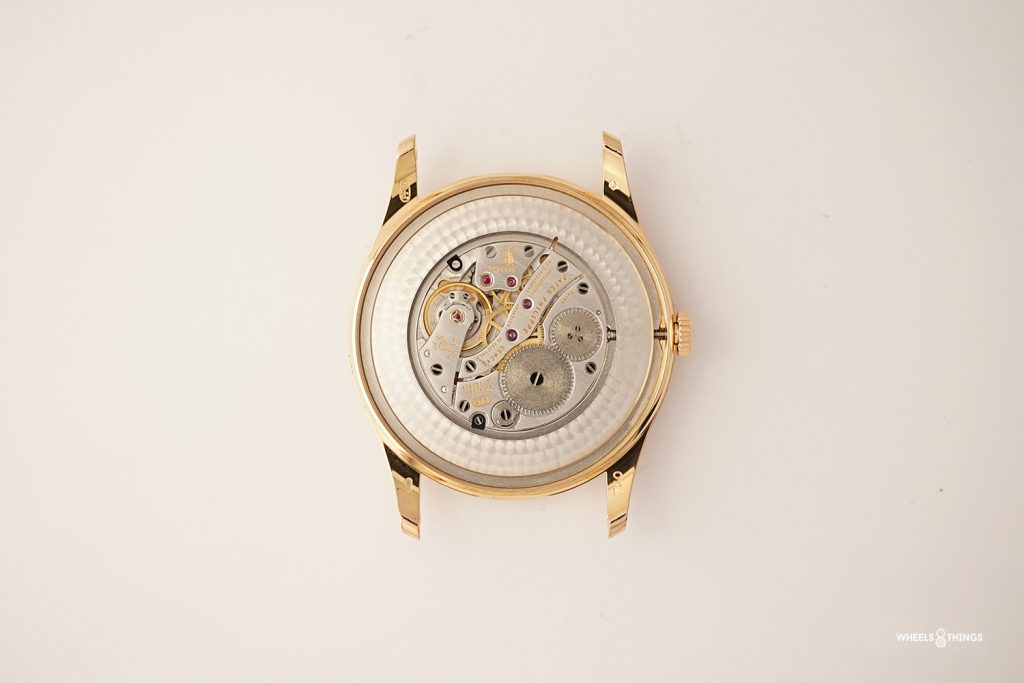
Although the PS in this case stands for ‘Petite Seconde’, the inner workings have a lot going for them to withstand the current conditions of magnetism and the reckless movements of the end user.
With a diameter of 21.9 mm and a thickness of 2.55 mm, it is a beautiful combination of technology and sophistication. Let’s just say that technology is a big part of this. For example, the balance is made from a Trademark product called Gyromax and the balance coil from Spiromax.
These technologies ensure that the watch can correctly display the time regardless of the conditions it is in.
Don’t we all love a holiday that we can share, day in and day out, for generations, in good times and bad? I think so, and a holiday to the Far East is certainly nice. But there is nothing like being healthy and being able to share it with all your loved ones, day in and day out.
Article & Photos: Michiel Imschoot
